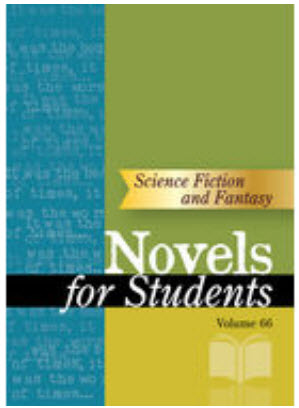Explore the Novels for Students series
| By Sarah Robertson |
Incorporating science fiction and fantasy into the classroom has the power to open other worlds for students to explore, allowing for new creative ways of thinking. By reading books set in places that don’t look like the world we live in, students can learn to make better sense of their own.
Science fiction and fantasy are broad literary subgenres of speculative fiction. Their superficial similarities conceal deep fundamental differences in style, tone, mood, and subject matter. Works in the science fiction genre nearly always take place in alternate, futuristic realities and often explore issues related to advanced technology. Fantasy literature, in contrast, usually takes place in faraway realms that can draw from the human past.
Early science fiction, which tended to focus on the dangers and promises of science and technology, included pioneers such as Mary Shelley, Edgar Allan Poe, H. G. Wells, and Jules Verne. Verne’s 1870 work Twenty Thousand Leagues under the Sea is considered a classic of the genre, and the author is often recognized as a pioneer of the genre. An imaginative novel, Twenty Thousand Leagues under the Sea contributed something new to literature as an action-packed journey set in an alternate world.
The mid-twentieth century, often considered the Golden Age of Science Fiction, was dominated by writers such as Isaac Asimov, Robert Heinlein, and Arthur C. Clarke. Clarke’s 1953 publication Childhood’s End explores the themes of space and aliens, which were popular in the genre at the time. The novel takes place after extraterrestrial beings invade Earth, and with the fate of humanity at stake, humans must figure out how to persist.
In the 1960s and 1970s, New Wave science fiction took a more modernist approach to the genre, notably including female voices. Ursula K. Le Guin, Marge Piercy, and James Tiptree Jr. (the pseudonym of Alice Bradley Sheldon) incorporated elements of feminism into their work. Piercy’s cyberpunk novel He, She and It, published in 1991, is a direct product of New Wave science fiction.
From the 1990s on, science fiction and fantasy have included more marginalized voices, who employ the genre to confront issues of racism and sexism. For example, Tomi Adeyemi’s young adult novel Children of Blood and Bone uses fantasy to explore Black trauma, police brutality, and racism. Similarly, Rivers Solomon’s dystopian science fiction novel, An Unkindness of Ghosts, serves as an allegory for slavery. N. K. Jemisin’s The Hundred Thousand Kingdoms confronts biracial identity, while Ellen Oh’s Prophecy tackles feminism.
Through a selection of key novels—including those referenced here—Novels for Students, Volume 66 offers a sweeping survey of the genre, helping teachers seamlessly incorporate it into the classroom. Explore the volume today.
Meet the Author
Sarah Robertson is a writer, editor, and longtime contributor to For Students.


